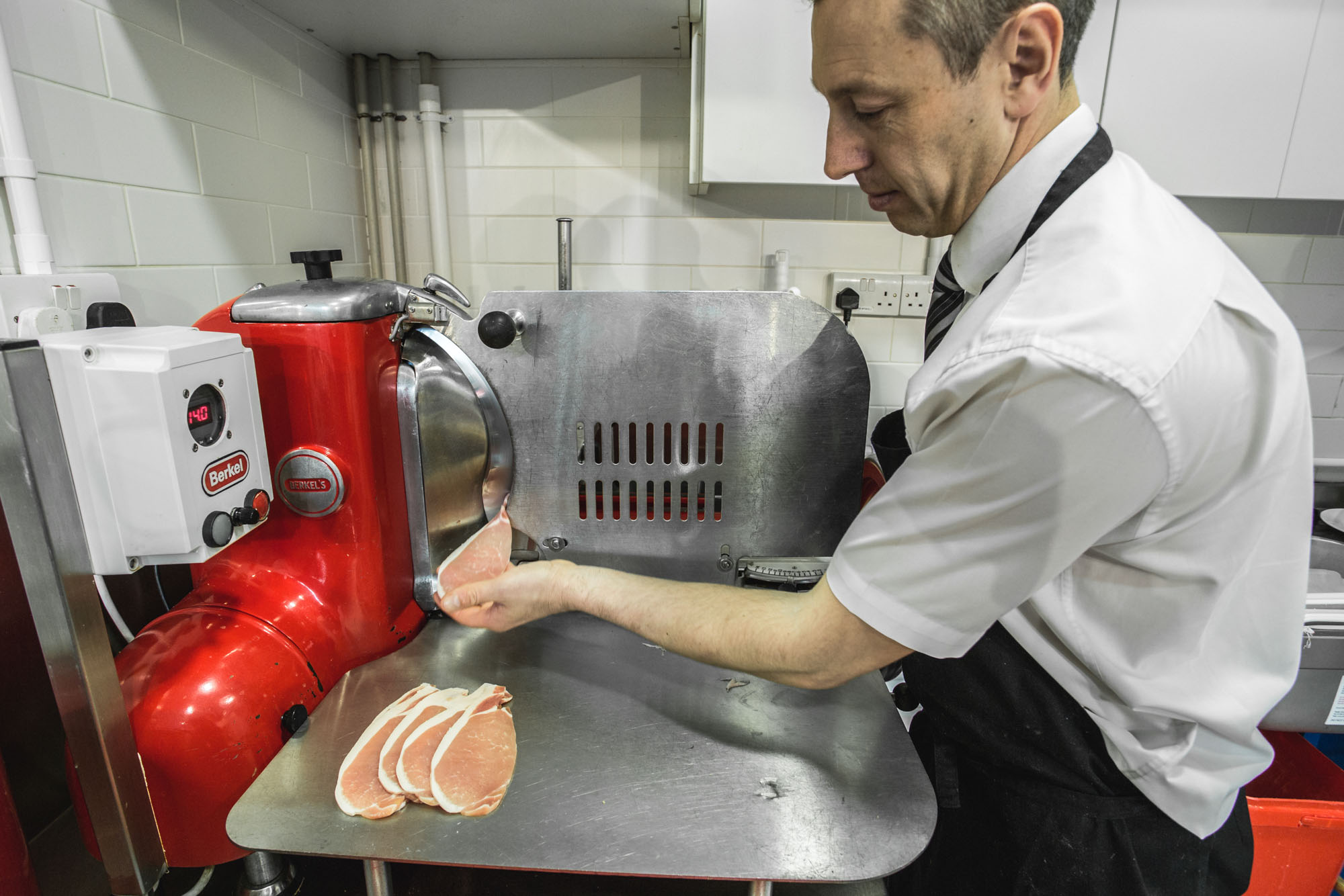Bacon is the word used for the raw pig meat that has been wet or dry-cured. The word bacon means ‘back’ but in fact refers to cuts from the side of the carcass that is butchered in a similar way to the butchering of pork. ‘Gammon’ is the word used for the raw, cured hind leg of a pig removed from a side of bacon.
Examples of traditionally cured bacons:
Suffolk Sweet-Cured Bacon: a cure of salt and coarse brown sugar gives a distinctively sweet flavour, with hint of molasses. At the same time, the bacon is very salty and the flavour is underpinned with a slight acid note. The bacon is smoked after curing.
Wiltshire Bacon: the unique flavour of this bacon comes from the combination of a mild cure and the fact that the pigs are fed on home-grown wheat and whey from the local cheese-making. It is available smoked or green.
Welsh Bacon: the Welsh cure produces very salty bacon with a good flavour. The bacon is not smoked after curing. It is not easily available other than in West Wales.
Ayrshire Bacon: the cure used in Ayrshire bacon is very mild and lightly salted; much of the flavour comes from the breed (Great White) and quality of the pig. It is available smoked or green.
‘Tendersweet’ bacon: a dry cure with a high sugar content giving a mild flavour. It is available smoked or green.

